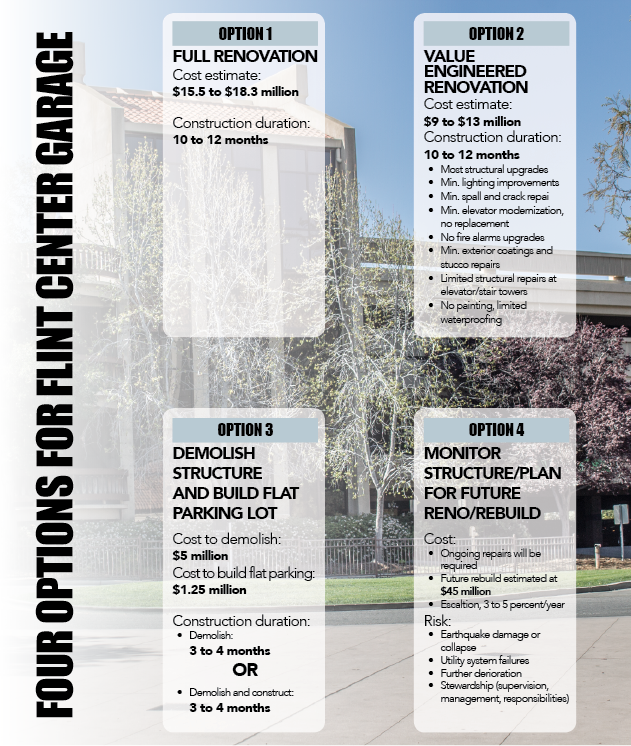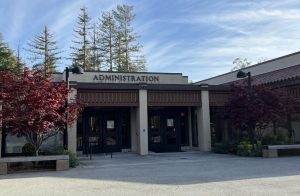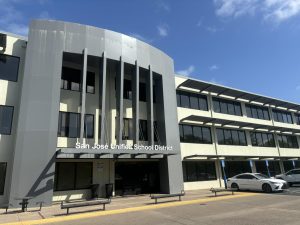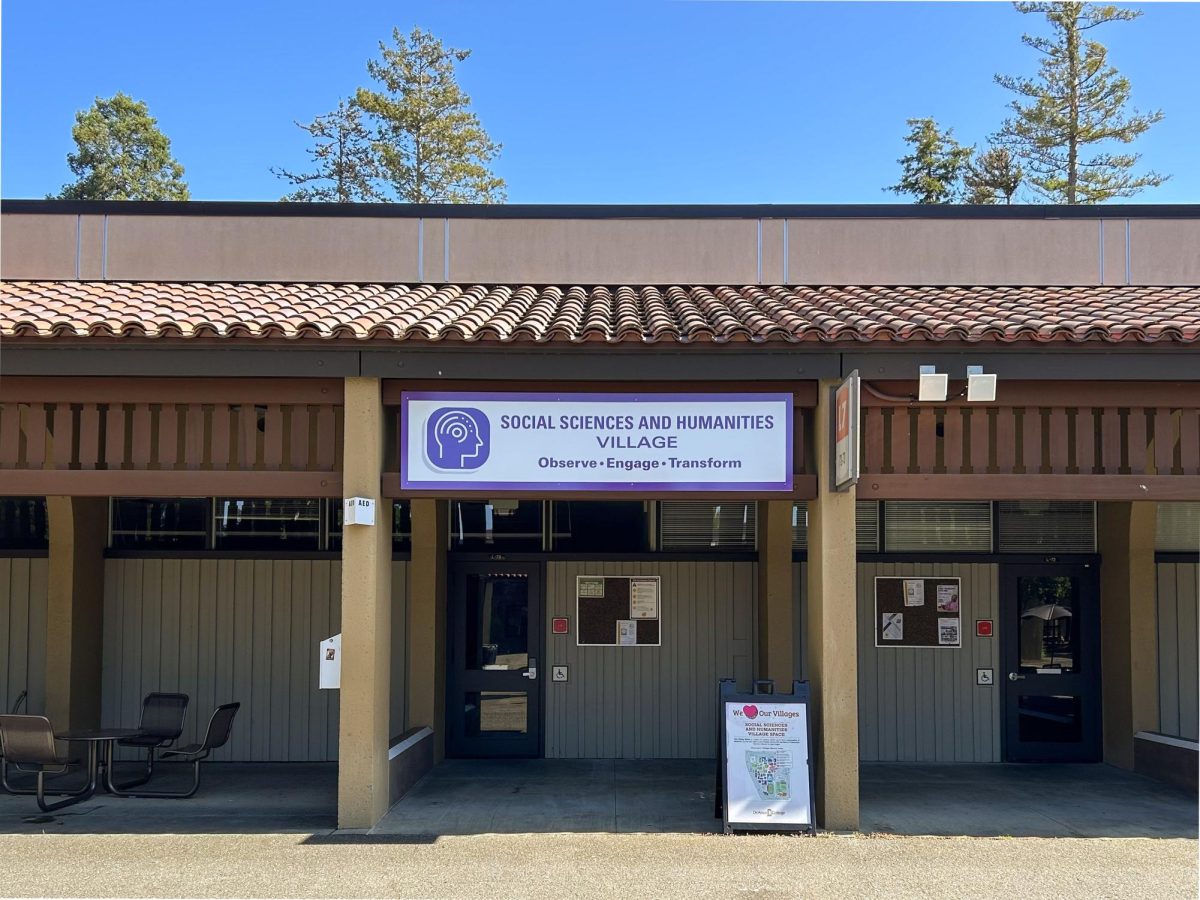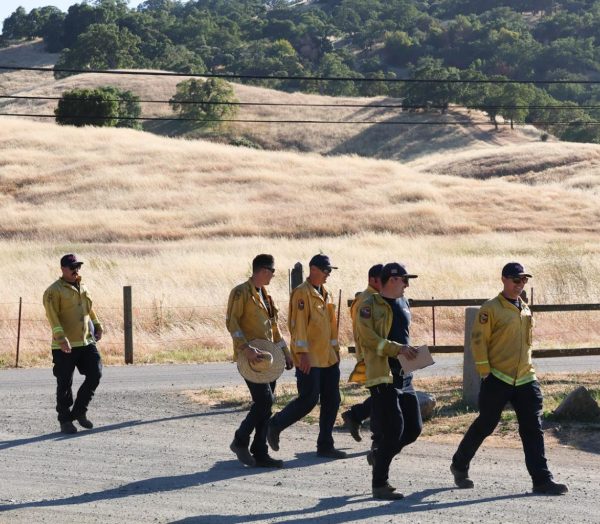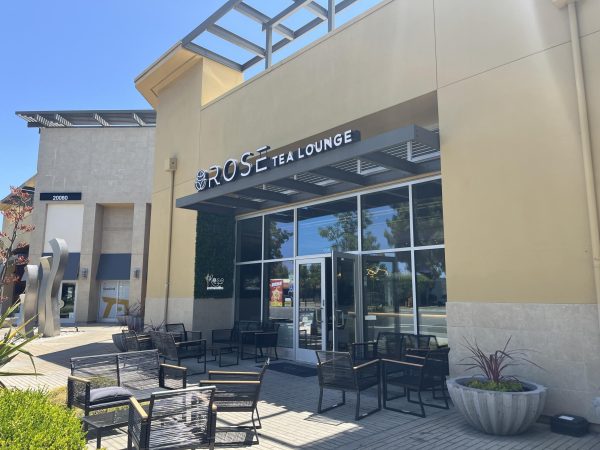Flint garage fixes: Remove or renovate
Parking will be impacted
October 17, 2014
Constructed in 1989, De Anza College’s Flint Center parking garage has had minimal structural maintenance in the last 20 years and is in need of a major renovation.
The latest maintenance work was done in 2006, but since then the garage has fallen behind in earthquake safety standards that were changed in 2010. The goal of the renovation is to meet the updated safety guidelines and limit the renovation’s impact on everyday college activity.
The current garage is a four-level structure containing 1,406 spaces available to staff members and students. The Flint Center parking structure provides 25 percent of the college’s parking leaving students wondering how fast the process will be.
“Timing is always complex for college building processes,” said Marisa Spatafore, De Anza director of marketing/communications and development. “After the board takes action, we want to proceed efficiently to improve safety.”
Although the new design plan has been approved, the FHDA board of trustees is still deciding which plan to proceed with due to a limited budget of $926,530. The cheapest option presented to the board by De Anza employees on Oct. 6 was estimated at a little over $6.5 million.
The four options presented to the board included a recommendation to demolish the structure and create a flat parking lot in its place. This option would take the least amount of time and money, with a five-month duration costing $6.5 million.
“The college has carefully assessed the various options,” said Spatafore “It is unlikely to preform well in a major earthquake making it necessary to find the best alternative.”
The impacts of the recommended option include an immediate shortage of parking spaces and the permanent loss of almost 1,000 spaces. Campus disruption could also be an issue because the proposed renovation could take place during the spring and summer quarters of 2015.
The three other options presented would all require much more time and money for renovations. The different options shared the same goals in addressing safety, correcting compliance issues and fixing critical infrastructure.
When the time comes and the renovation does get approved, there will be ways to combat the loss of 975 spaces. Ideas presented to the board include exploring offsite parking and creating an incentive for students or staff who carpool leading to a smoother transition through the renovation process.



